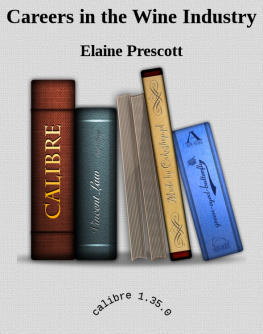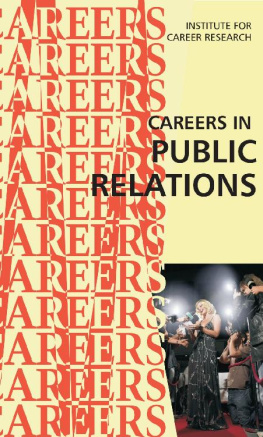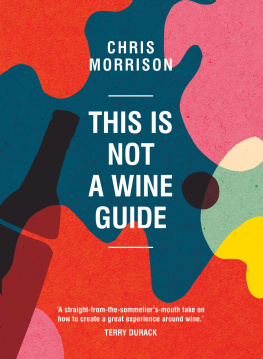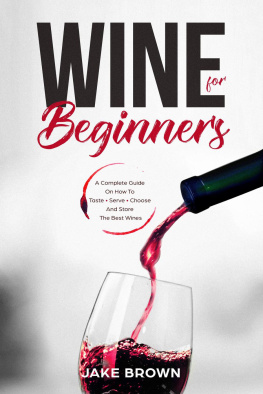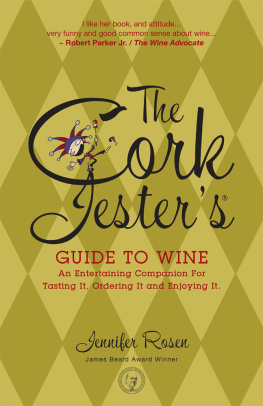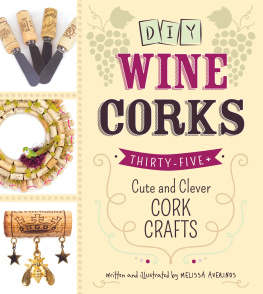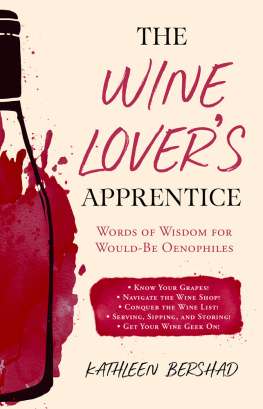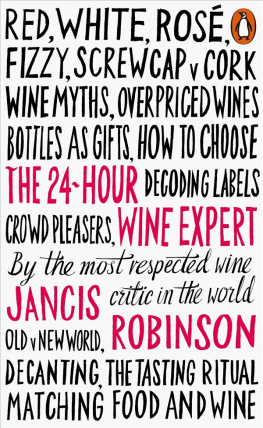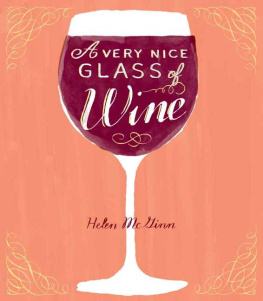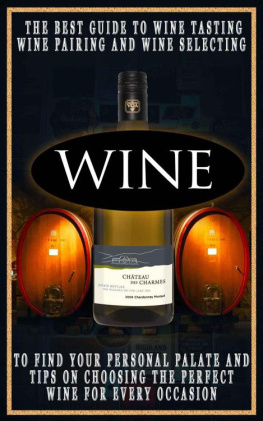CAREERS IN THE WINE INDUSTRY

When choosing a career, one of the first things you should remember is that you are not looking for a job. A career is much more than a job. A career may be thought of as a series of jobs, but there is more to it than that. A career is an area of expertise, learned and perfected over the course of a working lifetime, and applied within the framework of employment. Some careers offer a series of jobs that are very similar, but come with increasing responsibility. Other careers offer a variety of jobs that are very different but rely upon the same basic expertise.
The wine industry is like that. Over the course of a career it is possible for an ambitious wine professional to serve wine in a tasting room, buy wine for a restaurant, advise patrons on wine selection as a sommelier, make wine, manage a winery, and even grow grapes.
The wine business has grown dramatically in the United States in recent decades. Americans still do not drink as much wine as Europeans, but annual per person consumption of wine in this country rose from 1.7 gallons in 1995 to 2.8 gallons in 2013. There has also been a steady growth in American wine production, from 437 million gallons in 1995 to about 755 million gallons in 2013.
The quality of American wine has risen dramatically, too. It was only a few decades ago that American wine was looked down upon as cheap jug wine suitable only for unsophisticated palates. Today, American wines hold their own around the world, both in competitions and in markets.
The business is still growing. American wine consumption of 2.8 gallons per year may sound like high, but Italians put away about 10 gallons per year per person, and the French each drink on average 12 gallons of wine per year! You can see there is room for growth in this country.
WHAT YOU CAN DO NOW
Get some experience in the wine business for example, a part-time job at a winery or wine shop. Assuming you are at least 21 years old, you can get an entry-level job in the wine business. If you live near a viticultural (wine growing) region, there may be a number of opportunities. Many wine professionals get their start as servers in winery tasting rooms. Customers drop by the tasting room and try small samples of several wines. Hopefully, they buy a few bottles on their way out. Serving savvy customers for a few hours a day is a great way to learn what people like and to find out more about the wine market.
Another possibility is a job at a wine shop. Many full-service liquor stores have excellent wine selections, but there has been a trend in recent years toward stores that specialize in selling wine and providing expertise to go with it. Many of these new wine shops offer thousands of different wines. They expect their salespeople to be knowledgeable, and the stores often host tastings for their employees.
Most culinary schools offer wine courses, and even some universities have started offering wine courses, especially at their career-oriented extension campuses. Many wine shops also offer courses and seminars.
There is no better way to learn about an industry than by reading the magazines devoted to it. The wine business has many, including Wine Spectator, Wine Enthusiast, Wine Advocate, Wine & Spirits, Wine Maker, Wine and Viticulture Journal, and Beverage World. There are also magazines that cover wine as it relates to food, including Food and Wine, Saveur and Bon Apptit.
HISTORY OF THE CAREER
Archaeologists do not really know when humans first started making wine. The earliest evidence dates from about 6000 BC, but wine could easily stretch back to at least 11,000 BC, when pottery necessary to store wine first became common.
What is known is that the earliest varieties of grapes called varietals came from what we would now call the Middle East Georgia, Iran, Armenia and Turkey. All of these countries still produce wine today. The most common varietals in the region include Rkatsiteli, Saperavi, Sinandali, Chinuri, Kakhet and Voskeat. These varietals are still popular in their native lands, although they are not generally considered to be in the same league with modern vitis vinifera Chardonnay, Pinot Noir, Cabernet Sauvignon and other popular wines now known as noble vinifera.
Armenia is home to the worlds oldest winery, dating from about 4100 BC. At the site in Vayots Dzor, archaeologists discovered wine presses, fermentation vats, and other pieces of pottery and equipment to make wine. Winemaking spread throughout the Middle East, and into Europe and Africa, over the next several millennia. Winemakers can be found in hieroglyphics from ancient Egypt, for example. Once winemaking entered the Mediterranean Basin it developed rapidly, becoming part of the great trading empires established by the Phoenicians, Greeks and Romans.
The ancient Greeks exported wine throughout the Mediterranean, creating markets and making wine a part of daily life in many cultures. The Greeks led the way for the Romans, for whom wine was a dietary staple actually preferred to water. The Romans established essentially all of the European viticultural regions prominent today, including France, Italy and Spain. Winemaking expertise accelerated under the Romans, who cross-bred grapes to create new varietals, and developed new technologies to make better wine in larger quantities. The Romans also introduced the first system of appellations, or regions in which specific types of wine are grown. Today all winemaking regions use the appellation system as a way to ensure consistent quality.
In the Middle Ages in Europe winemaking was actually encouraged by the Roman Catholic Church, which depended upon wine to conduct Mass. Wine was consumed daily by Europeans living in the south, where most of the grapes were grown. Northern Europeans, who grew grain, preferred beer.
Wine spread from the Old World to the New World along with European exploration and colonization. The Spaniards brought wine to what is now known as Latin America in the 16th century. At one time Mexico was the largest wine producer in the Western Hemisphere. Australia, New Zealand and South Africa also developed viticultural regions to serve their British, French and Dutch colonists.
Wine came to California from a variety of sources. Spanish missionaries planted the first vineyards near San Diego in the late 1700s. The California gold rush of 1848 brought thousands of new settlers to Northern California, around San Francisco. The boom created a new market for luxury goods, including wine.
Starting in the 1850s Hungarian entrepreneur Agoston Haraszthy brought cuttings from some of the greatest European vineyards to Northern California. Many of the varietals were amenable to the distinct climate and soil conditions of the area, and flourished.
Amazingly, California wines were generally regarded as mediocre until 1976, when several California wines bested their French counterparts in a blind tasting at the Judgment of Paris, a famous wine competition. California is the worlds fourth-largest wine producer, after France, Italy and Spain.
Today, even fairly modest restaurants everywhere have a dozen or so bottles on their wine list, and all but the cheapest wines are quite drinkable. There is at least one winery in every state. Some make specialized wines, like Hawaiis pineapple wine, and the blueberry and blackberry wines of southern Illinois. A few states Washington, Oregon and New York produce wines that rival Californias.
WHERE YOU WILL WORK
Where you will work depends upon what you want to do. Sommeliers, wine buyers and wine shop salespeople work everywhere. Major metropolitan areas will obviously be home to more wine-related jobs than rural areas. There are exceptions to the rule, however. Small towns with a robust tourist trade like Aspen, Colorado or Jackson Hole, Wyoming offer many wine jobs in their restaurants and hotels. You will also need to consider the relative sophistication of the area. Most restaurants work with wine wholesalers to buy their wines. The chef or owner sits down with a sales representative, does a tasting and buys wine for the cellar. Only the finest restaurants employ full-time sommeliers. There are many more sommeliers in New York City than in a luxury tourist town.

